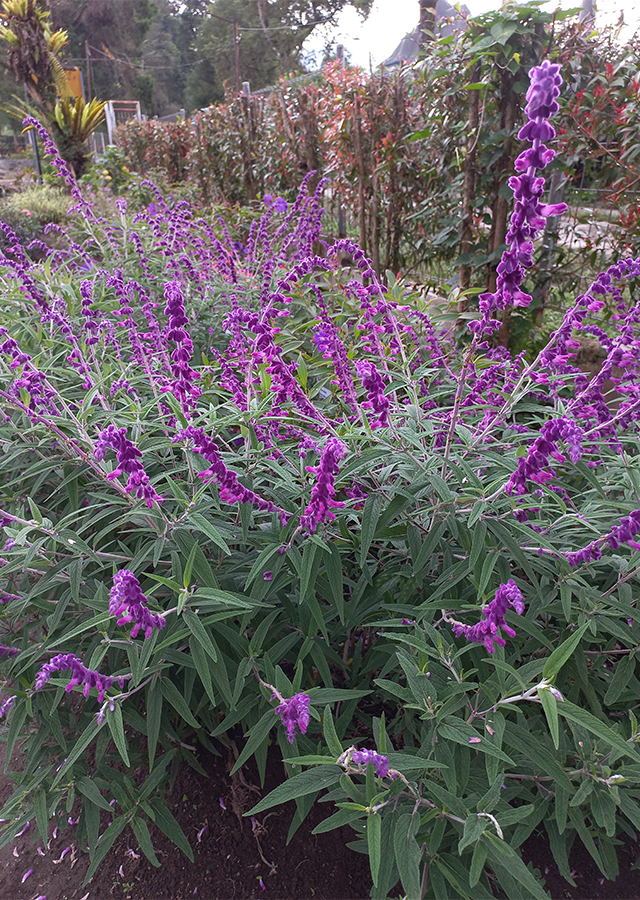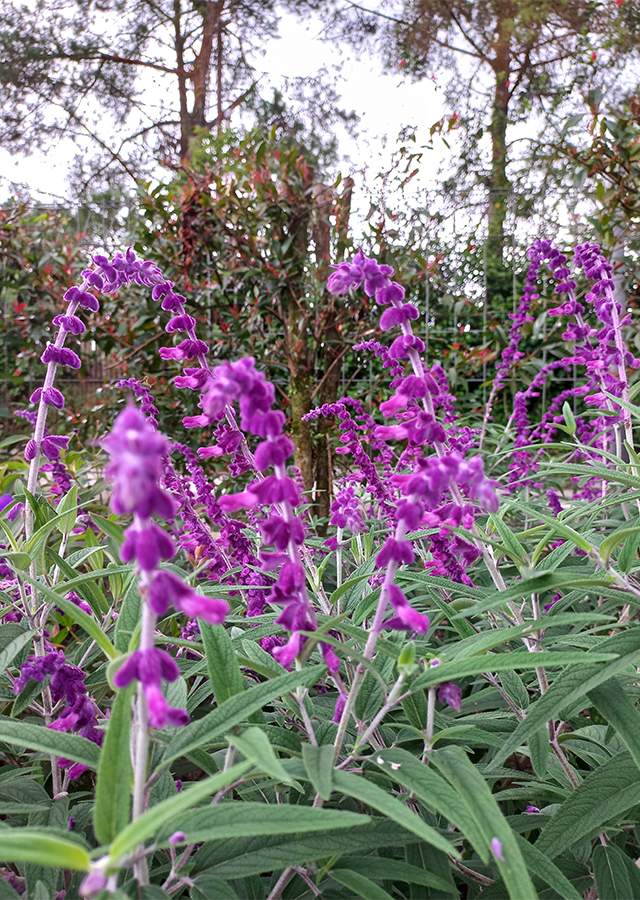Traditional Herbs from Salvia leucantha
wound
- Wash the fresh leaves of purple salvia, wash them thoroughly.
- Crush them until they become a paste.
- Apply them to the wound.
cough
- Take enough fresh purple salvia leaves, wash them until clean .
- Boil the leaves until boiling.
- Let it warm/cold.
- Strain then drink.
What is Salvia leucantha Looks like??



Parts of Salvia leucantha that could be used
- All Parts of the Plant
Salvia leucantha Distribution
Purple salvia is a plant native to Mexico to Central America which is now distributed throughout the world, including throughout the American continent. This plant has a unique flower appearance, where the surface is covered with soft, velvet-like hairs. This unique appearance means that this species is often planted by people as an ornamental plant in their yards. Traditionally, purple salvia also has medicinal properties, one of which is believed to be able to treat coughs. In addition, purple salvia produces essential oils with various pharmacological activities in them. The essential oils produced are usually used in the perfumery and food flavoring industries, as well as in medical and clinical microbiology, pharmaceutical botany, food preservation, and others.Agroecology of Salvia leucantha
Purple salvia can be found growing at altitudes between 700 - 3,400 m above sea level. This species grows well in fertile, sandy, evenly moist and well-drained soil with soil acidity (pH) ranging from 5.8 - 6.2. Although this species can tolerate some light afternoon shade, it grows best when in full sun (6 hours per day). Purple salvia requires regular watering and is drought tolerant. However, although this species is able to tolerate drought, it grows best with regular humidity. This species is also not very resistant to frost and grows best at temperatures of 16 - 19 °C.
Morphology of Salvia leucantha
- 4-angled stems, striking white and hairy, branched, erect and often curved at the ends.
- Lanceolate-linear leaves 10-20 cm long, leaf tips pointed, leaf edges sawed (serrate), leaf surface wrinkled ( rugose), pinnate veins, grayish green, velvety texture, pubescent (with short, soft hairs) on top, tomentose (hairy like wool) below.
- Flowers have a purple or white corolla covered with thin, velvety hairs,\u00a0swollen at the throat, without a feathery ring inside. Petals are purple .Arranged in a circle at each node.
- Small fruit, reddish brown.
Cultivation of Salvia leucantha
�
Salvia leucantha, more details :
Chemical Content of Salvia leucanthaSesquiterpene hydrocarbons (6.9-guaiadiene, (E)-caryophyllene, bornyl acetate, germacrene D, (E)-β-farnesene, and bicyclogermacrene), flavonoids (quercetin-3-O-α-L-rhamnopyranosyl-(16)- β-D-glucopyranoside).
Benefits of Salvia leucantha
Relieves coughs, chest pain, lungs, stomach ache, heals wounds. Has activity as an antioxidant, antimicrobial, antibacterial, antispasmodic, neuroprotective (protects or reduces nerve damage), anticancer, anti-Alzheimer's.
Simplisia of Salvia leucantha
Another Facts for Salvia leucantha :
Synonym of Salvia leucanthaSalvia bicolor Sesse & Moc., Salvia leucantha f. iobaphes Fernald
Habitus of Salvia leucantha
Herb. Annual herb, can reach 120 cm in height
Habitat of Salvia leucantha
- Roadside
- Land
No comments:
Post a Comment